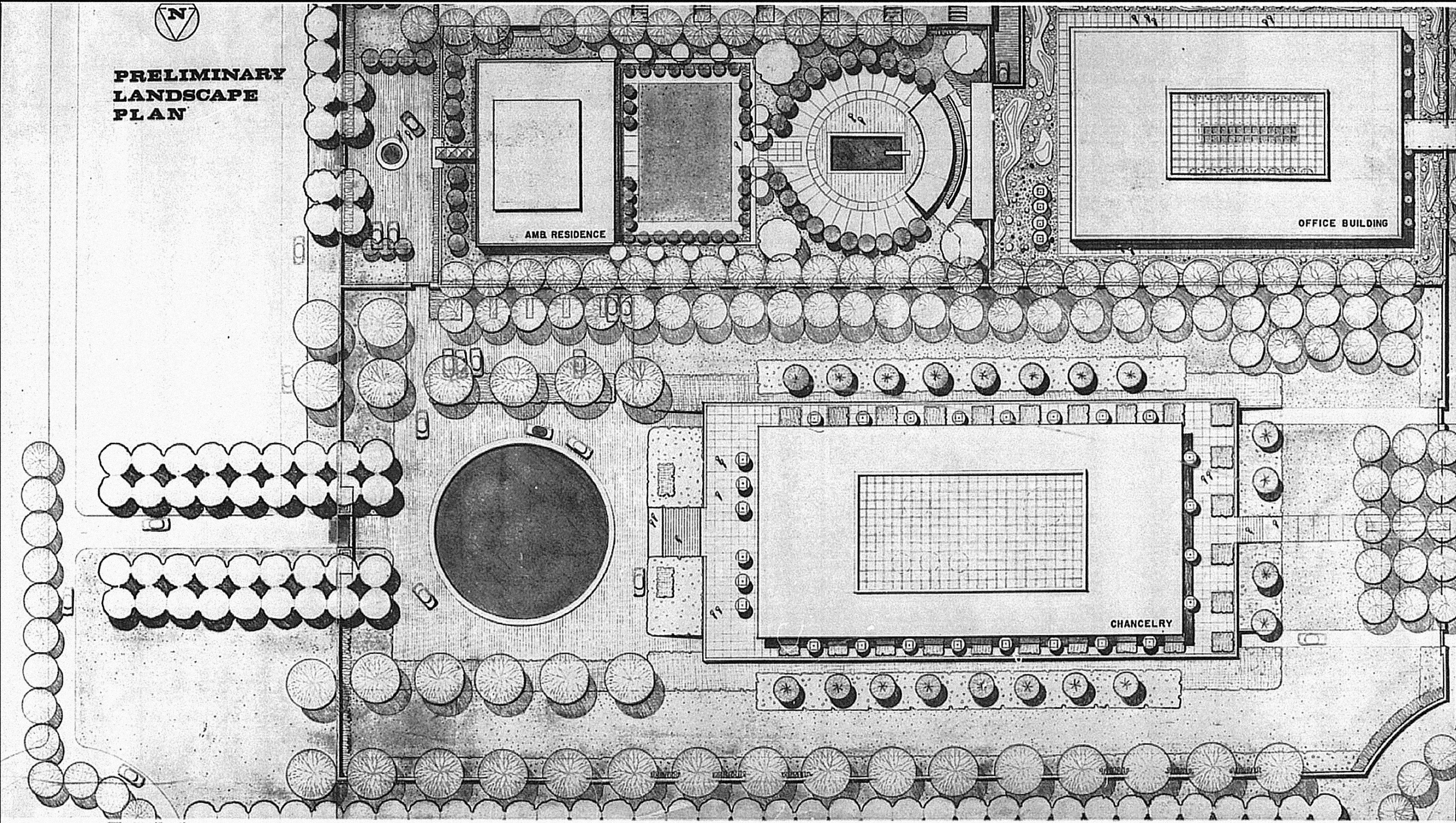
The Bureau of Overseas Buildings Operations Office of Cultural Heritage implements a stewardship program for the care of the U.S. Department of State’s culturally, historically, and architecturally significant properties and collections through research, conservation, educational programs and exhibit design, and maintenance protocols. During the initial work for the New Delhi New Embassy Compound Phase 1, the design team performed a Historic Structures Report and evaluated the cultural significance of the existing historic structures to ensure that the new modern design the future buildings preserved their significance while honoring their legacy.
Register of historically significant Property
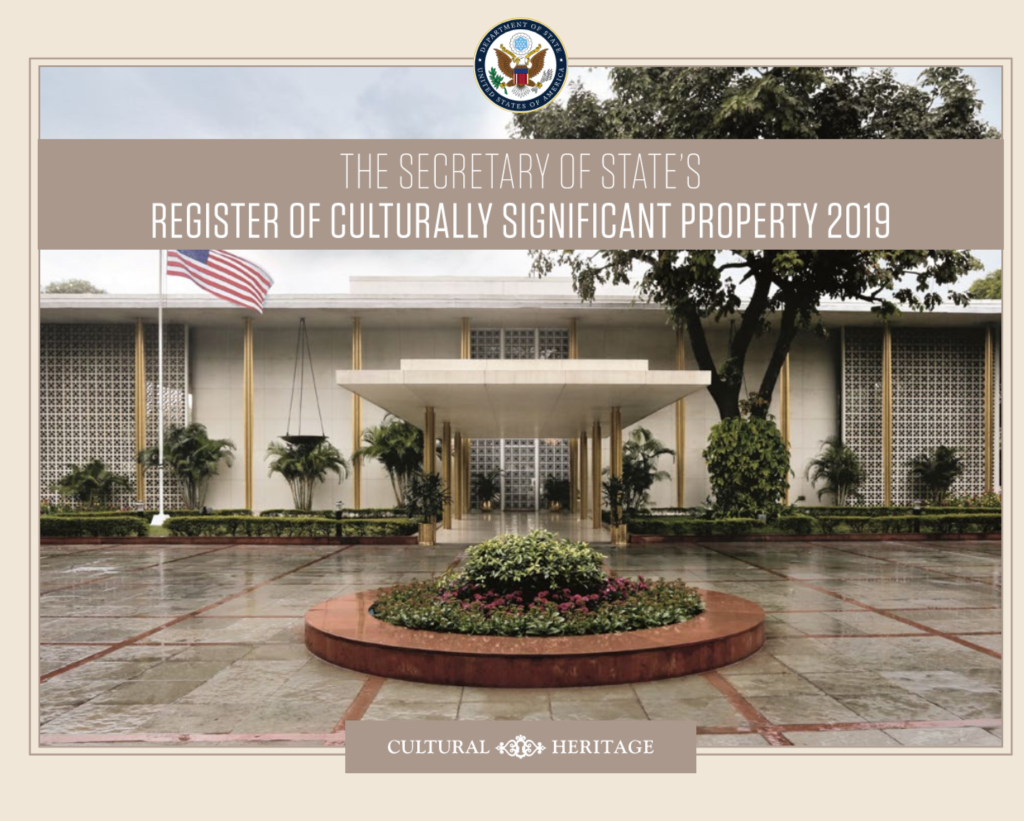
The Secretary of State’s Register of Culturally Significant Property was founded in 2000 as a White House Millennium Project. It is an honorific listing of important diplomatic overseas architecture and property that figure prominently in our country’s international heritage. These include chanceries, official residences, office buildings, a museum, a national cemetery and guest homes. The Department’s Register is instrumental in promoting the preservation of American history and architecture. The Department provides professional stewardship, preservation, and maintenance of unique and significant buildings. The Register serves to commemorate this heritage and to promote and preserve American history and architecture.
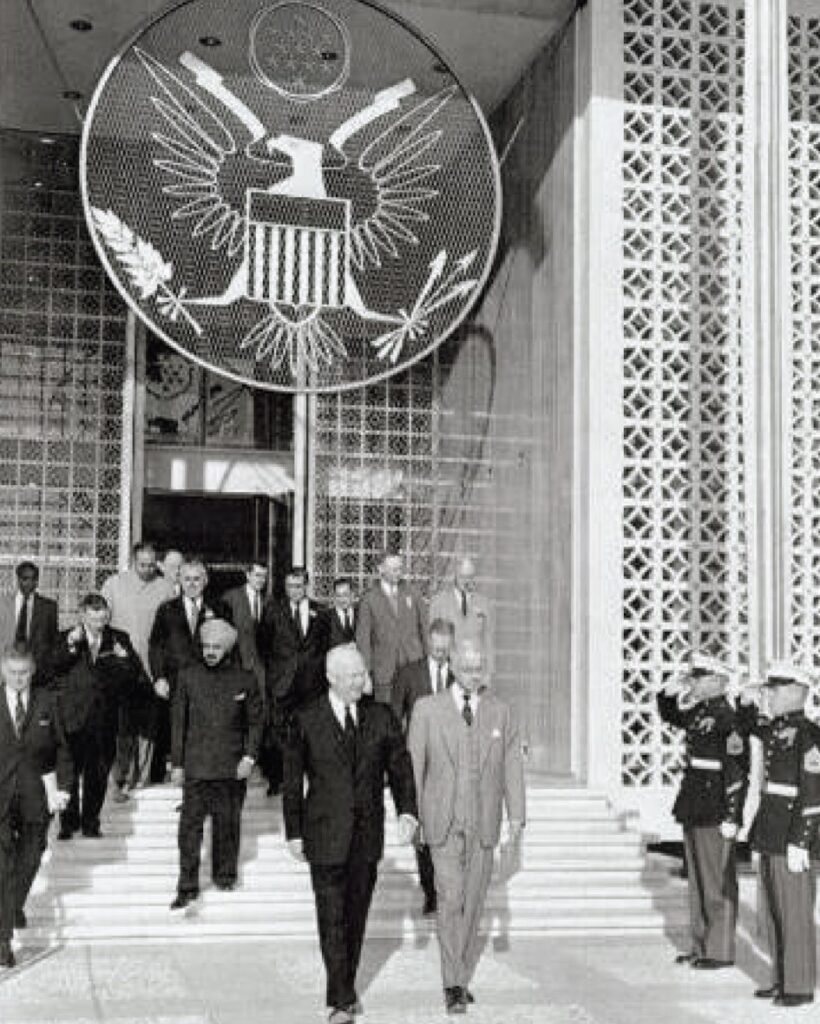
US EMBASSY NEW DELHI CHANCERY
The Chancery of U.S. Embassy New Delhi, built in the 1950s during the heyday of American foreign building, was the first major embassy building project approved during the administration of President Dwight D. Eisenhower (1953-1961). The chancery was designed by master architect Edward Durell Stone, who captured history and fantasy in a memorable symbol of the United States’ commitment to India after its independence.
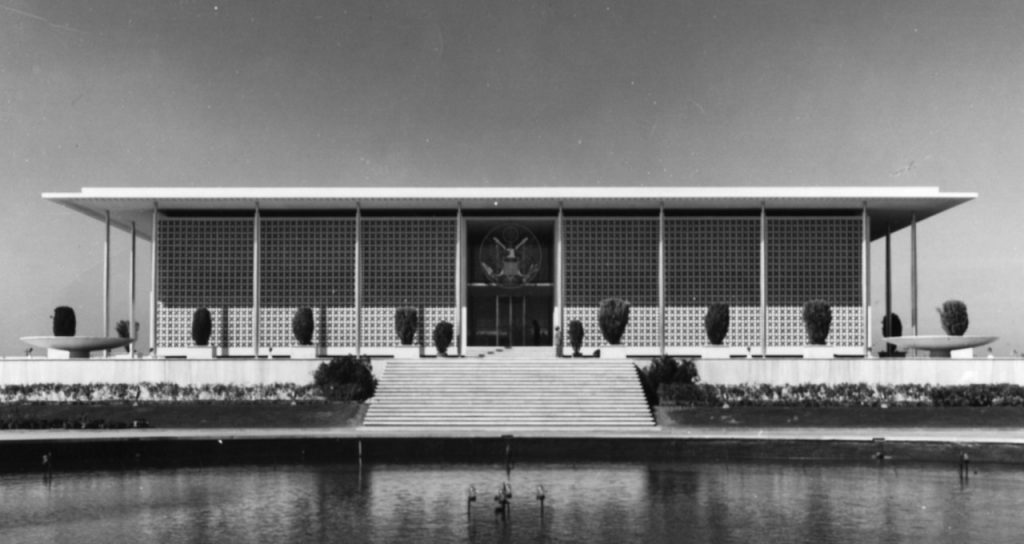
The Embassy is a hallmark example of modernist philosophy by Stone, one of the earliest exponents of the International Style. It is a well-proportioned box formally standing on a podium-a simple isolated object in open space. The use of water and the open-air central pool recall Mogul gardens of earthly paradise and the exterior glass curtainwall is protected by a vivid and climatically responsive sunscreen. Notably, these themes return with the future New Embassy Phase 1 project.
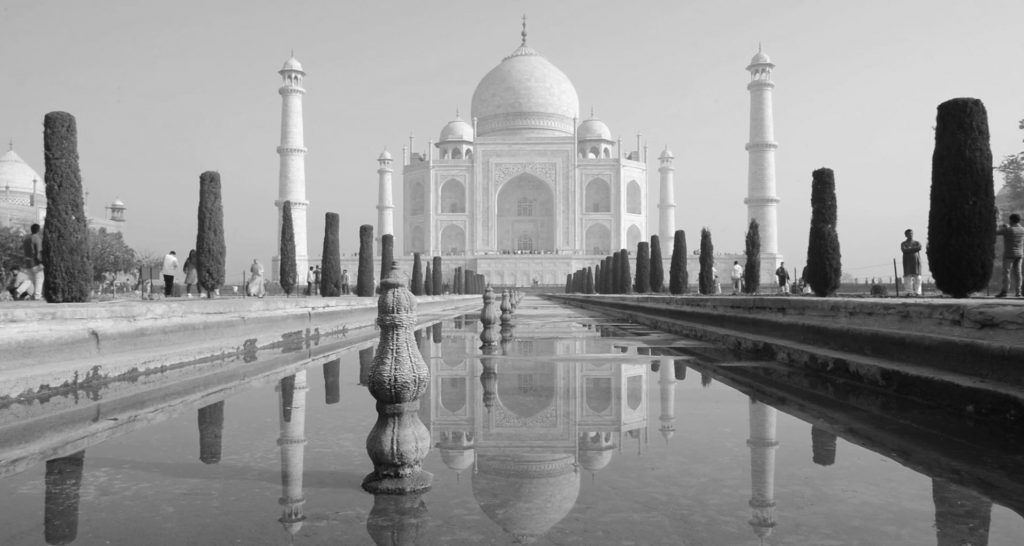
Nehru, one of the county’s founding leaders, praised the design. Frank Lloyd Wright said it is the only embassy to do credit to the United States and opined it should be called the “Taj Maria” to give credit to Stone’s wife and muse. In India the Chancery continues to observe the type of consideration afforded historical landmarks, as appreciation for the preservation of modernist architecture grows worldwide.
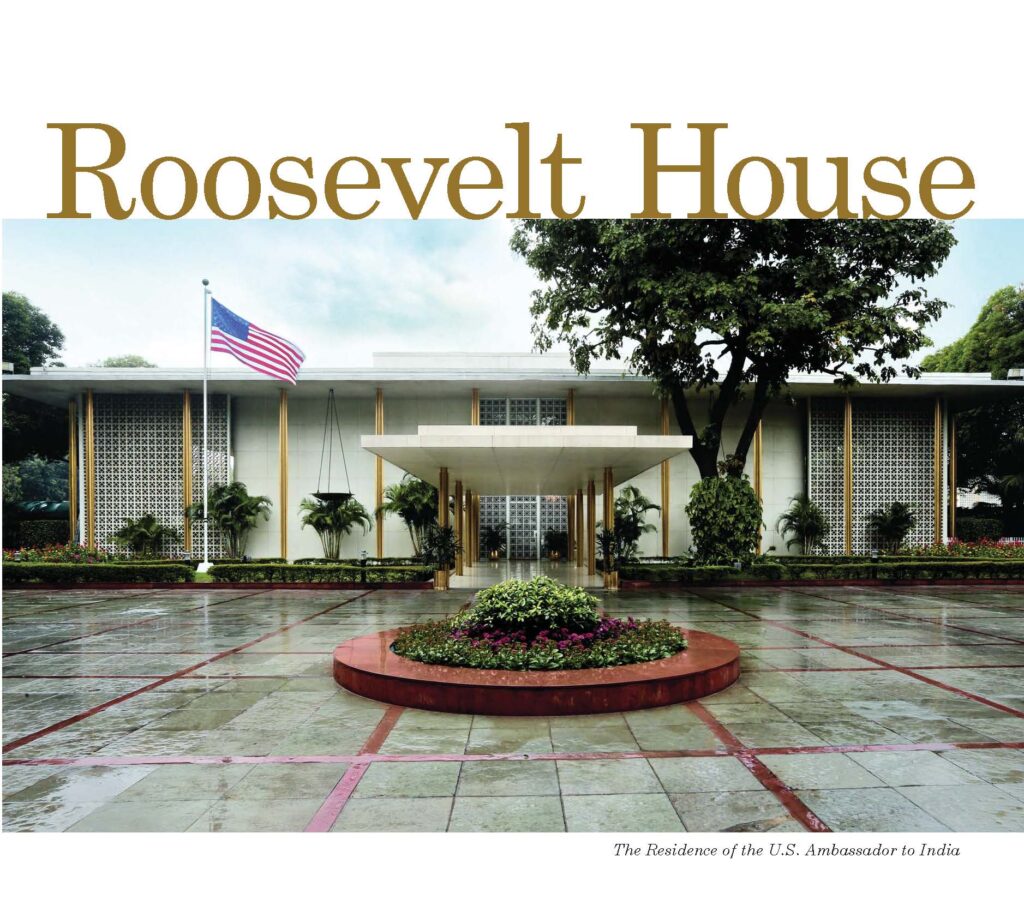
ROOSEVELT HOUSE
Constructed at the same time as the Chancery of U.S. Embassy New Delhi, the Roosevelt House, as it is known today, was designed also by master architect Edward Durell Stone as the Ambassador’s Residence. The Residence, similar to the Embassy, is a well-proportioned box. The house is a reinforced concrete structure with light-colored terrazzo walls and a cantilevered roof with a substantial overhang that shades the façade.
Roosevelt House: The Residence of the U.S. Ambassador to India
(Click for full brochure)
a major architectural triumph
John Kenneth Galbraith, the first United States ambassador to India to live in the Roosevelt House.
Defining the HISTORIC significance
After nearly seven decades in operation, The U.S. Department of State commissioned a study to memorialize the architectural and historic significance of the U.S. Embassy campus in New Delhi, providing the background information necessary to guide appropriate stewardship of the facility1. The report focused on the chancery, Roosevelt House, and their associated grounds. The report allowed the Weiss/Manfredi team to design the new campus buildings respecting the historically significant entry sequence of the reflecting pool and the Roosevelt House gardens while honoring the historic chancery structure with a modern nod to its sunscreen.
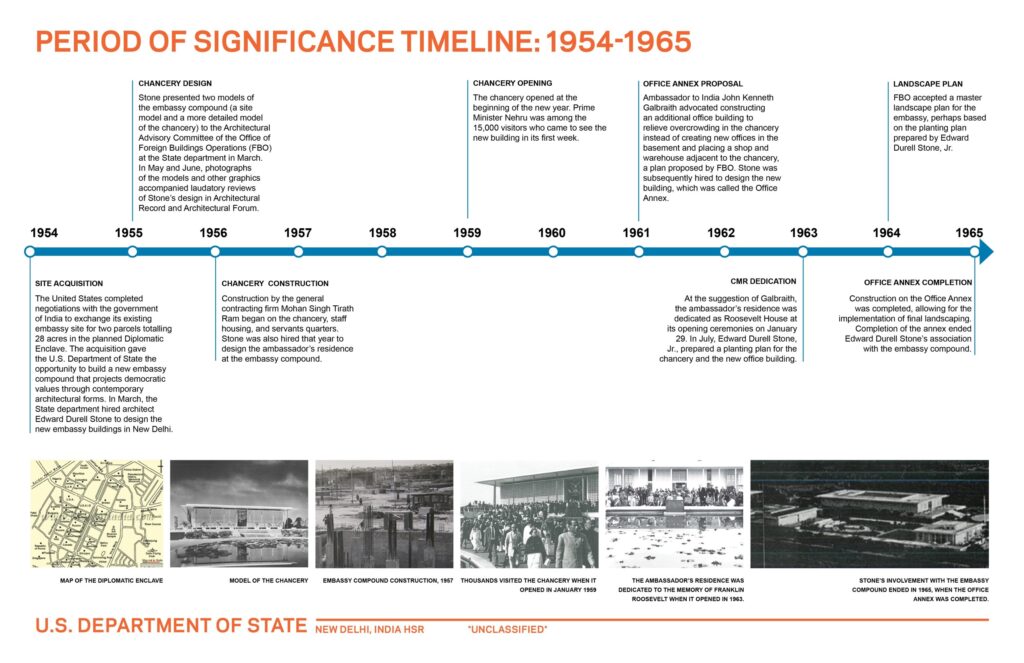
The United States Embassy campus in New Delhi derives its significance from two sources: 1) its association with the Foreign Buildings Operations office expansion and adoption of Modern architecture in the 1940s and 1950s to support an American diplomatic strategy to strengthen democratic institutions worldwide after World War II, including and especially in India; and 2) the planning of the embassy campus and the design of its principal buildings by Edward Durell Stone, a master architect who combined the principles of Modern architecture with formal and decorative qualities that represented an evolution of his International Style buildings of the pre-war years.
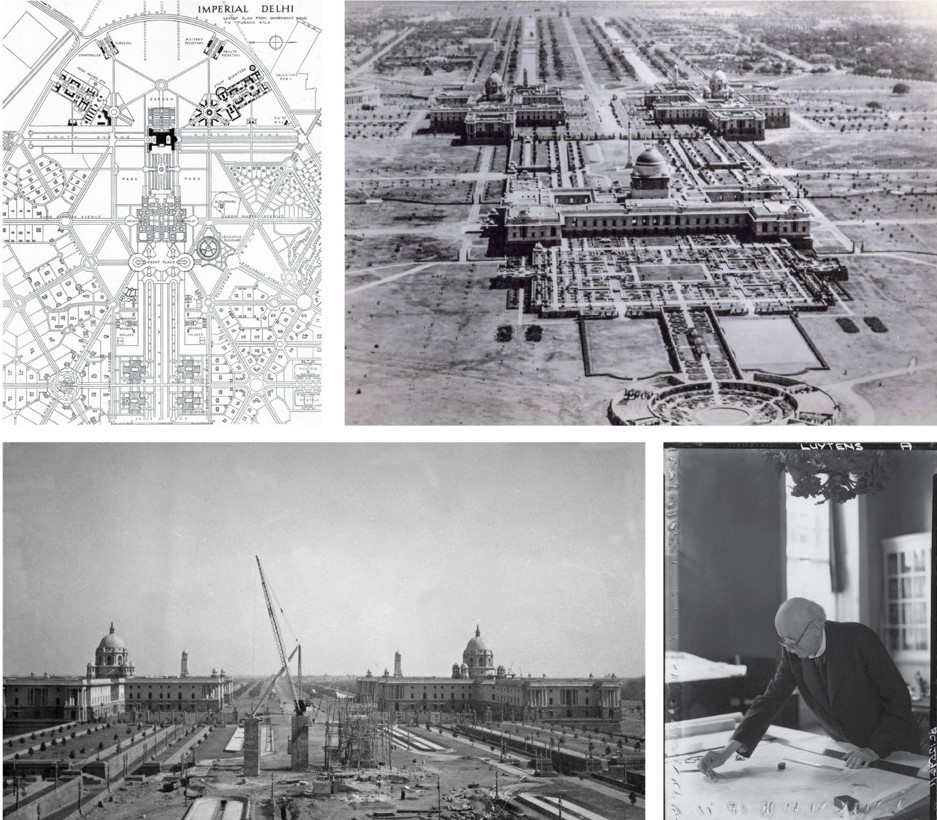
The Indian capital provided a prominent stage for an appropriate national image. The newly independent government of India had set aside a large undeveloped tract of land for the purposes of creating a diplomatic enclave for foreign missions, meaning that the American embassy buildings could be immediately compared by residents, visitors, and other diplomats to contemporary structures representing the global community. The United States acquired two plots of land totaling 28 acres in the diplomatic enclave in 1954. The American site faced the enclave’s central thoroughfare, the Central Vista Road, later called Shantipath.
This is one of the shining examples of how America used architecture to create and convey a sense of openness and diplomacy.
Michael Manfredi, Co-Founder Weiss/Manfredi
U.S. Embassy New Delhi Opens in January 1959
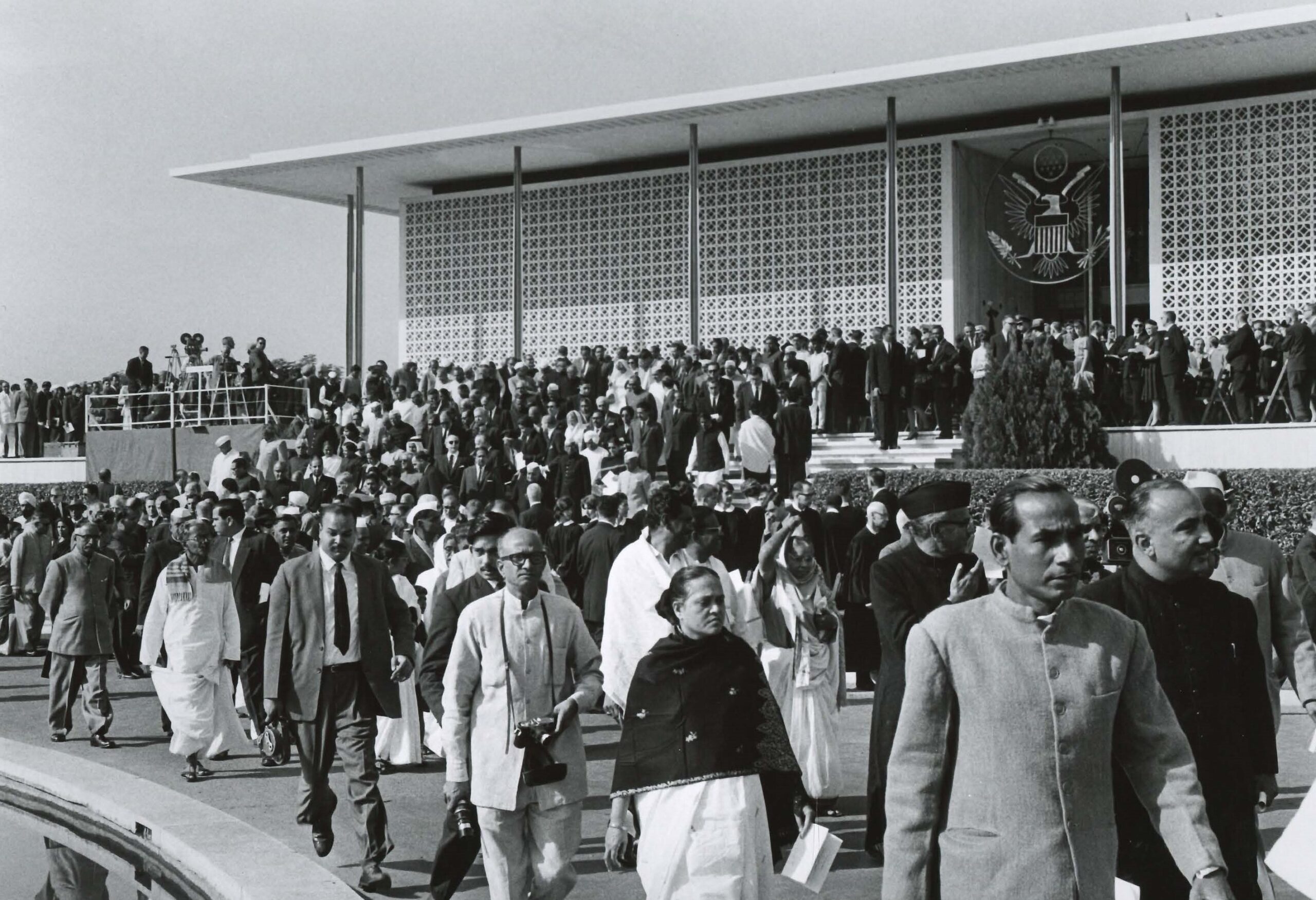
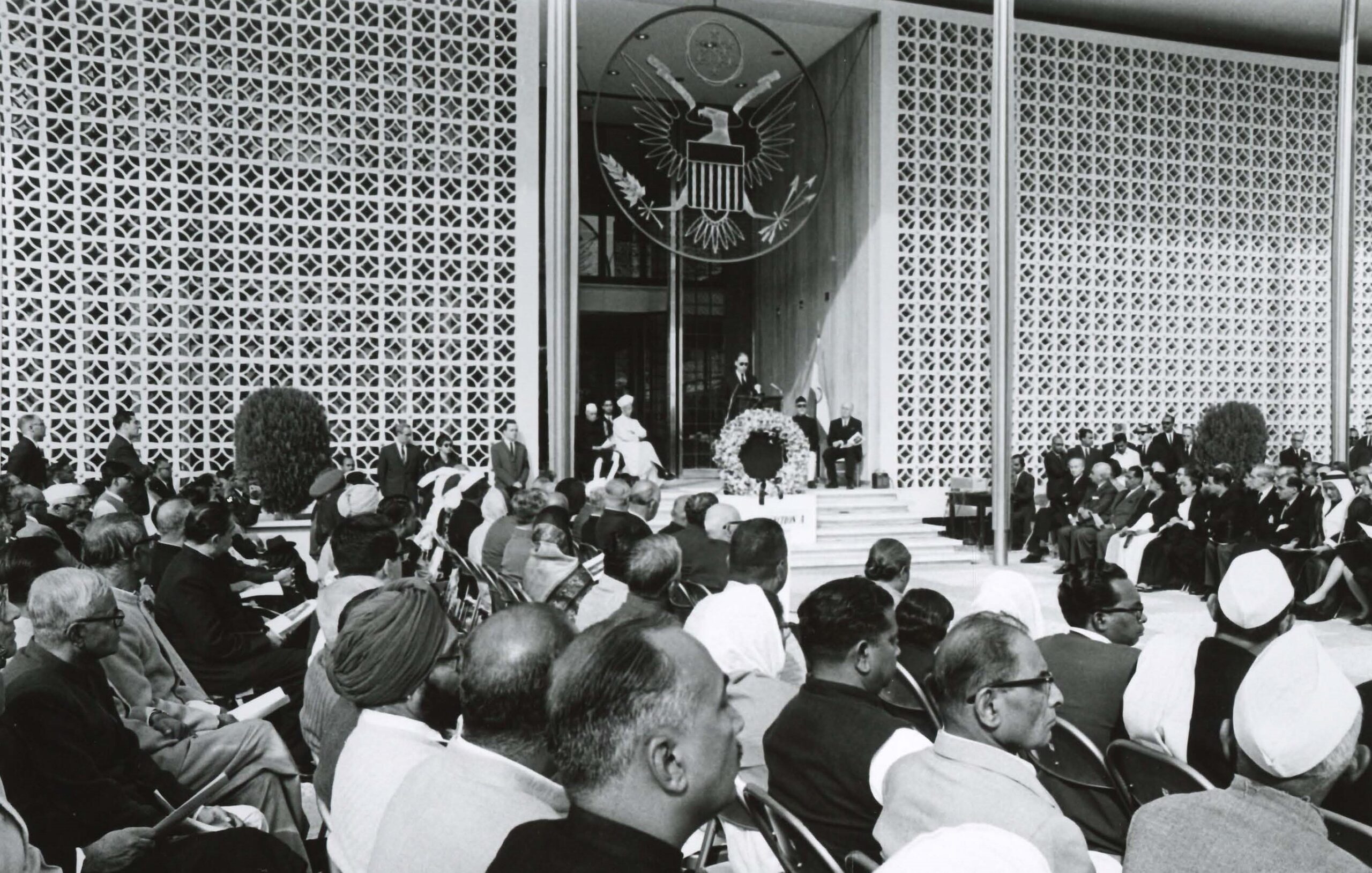
Legacy of Architecture – historic embassy design
Construction of the embassy buildings required cooperation between public and private interests in both India and the United States. An Indian company – Mohan Singh Tirath Ram, named for its two principals – won the contract for the chancery, staff housing, and domestic worker quarters, beating out three other competitors. Singh’s company, Oriental Building and Furnishings, also acted as general contractor for Roosevelt House and additional staff housing.
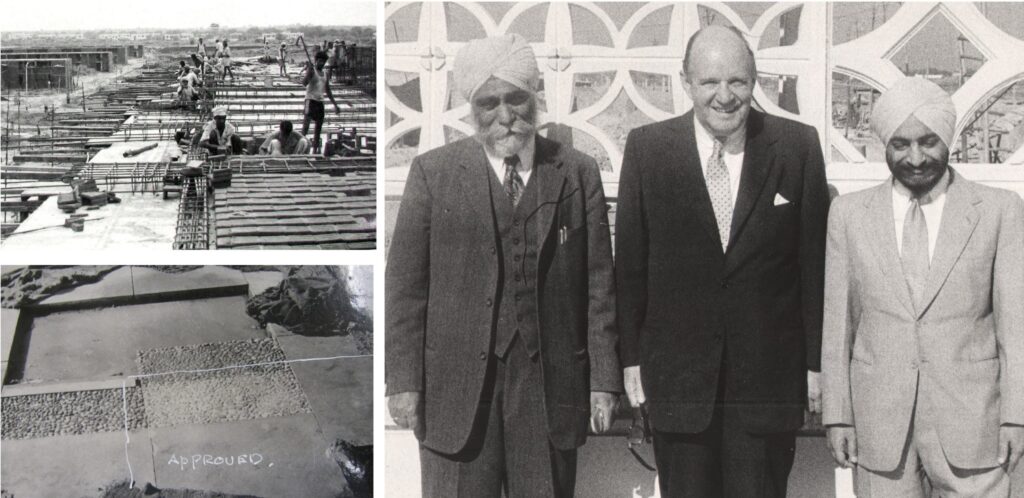
The contractor held responsibility for turning many of the drawings from Stone’s office into shop drawings used at the site by construction supervisors and laborers, and it also proposed solutions to problems arising from shortages of materials and other issues. More than 80 percent of the embassy was constructed from materials made in India, and as Stone describes in his autobiography, it was largely built by hand.
As many as 1,800 people lived on the site in the three years during which the chancery was built, and 450 Indian men and women worked on the ambassador’s residence.
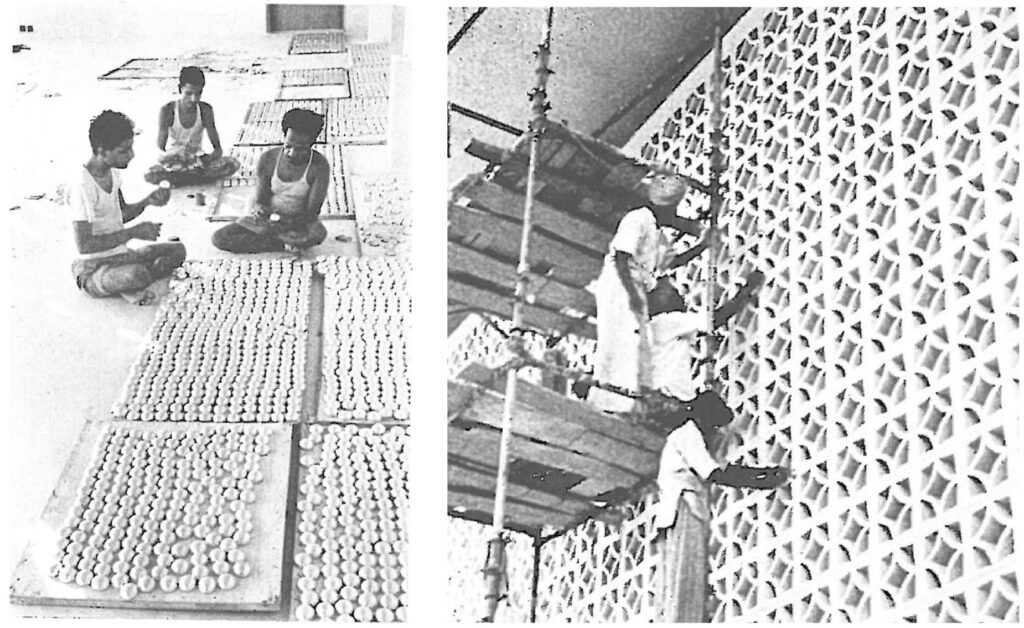
Indian workers performed the lion’s share of the construction, and many of the materials were either hand-made or hand-finished, including the trademark terrazzo blocks used in the screen walls. The iconic screens were made of a mixture of concrete and marble, and fabricated on site in a series of one-foot molds. The podium paving contained small stones that the craftsmen collected from the sacred Ganges river.
Hand craftmanship accounts for the high finish of the New Delhi Embassy. Detailing was deliberately attuned to the traditionally intricate rhythms of Indian craft.
Architectural Forum, 1959
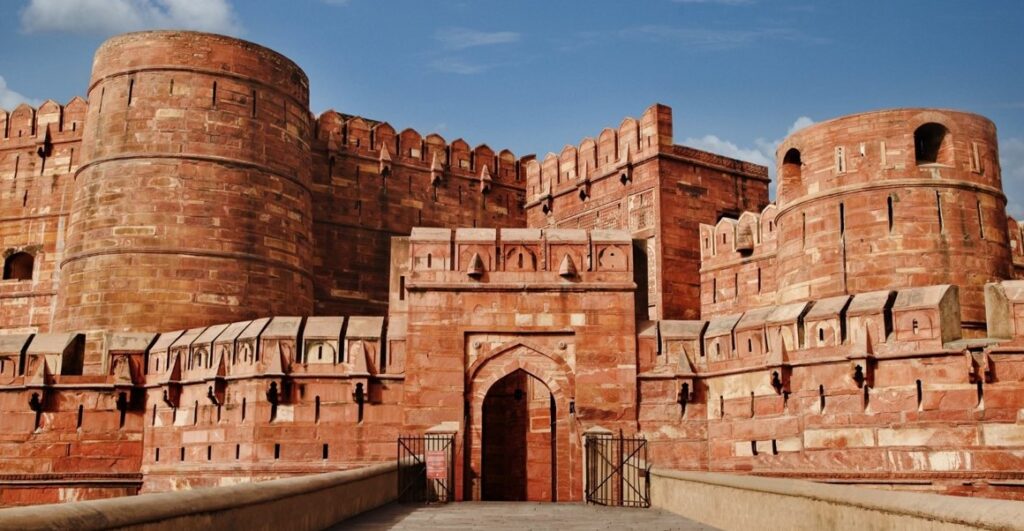
The location of an embassy abroad creates an opportunity to research the architecture and landscape of the host country. India’s great legacy of palaces, tombs, fortifications, and formal gardens, which reached a zenith in the Mughal and Rajput dynasties of northern India, offers models both powerful and delicate for the new embassy design in New Delhi. Weiss/Manfredi traveled to several historic sites in India to explore these models, photographing and abstracting their architectural underpinnings before beginning design.
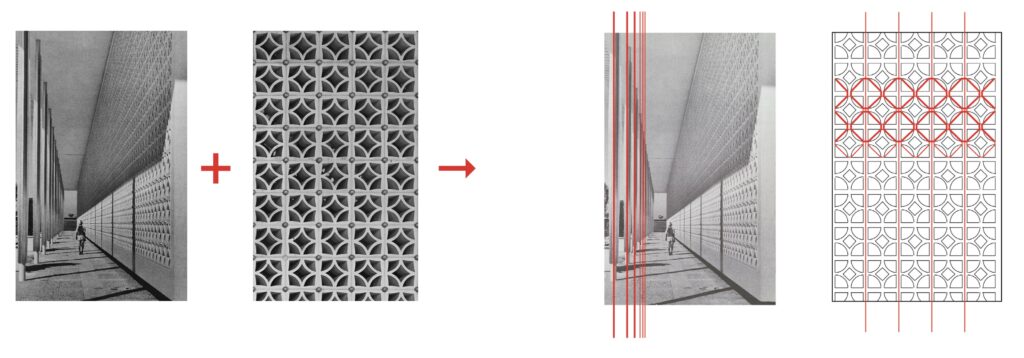
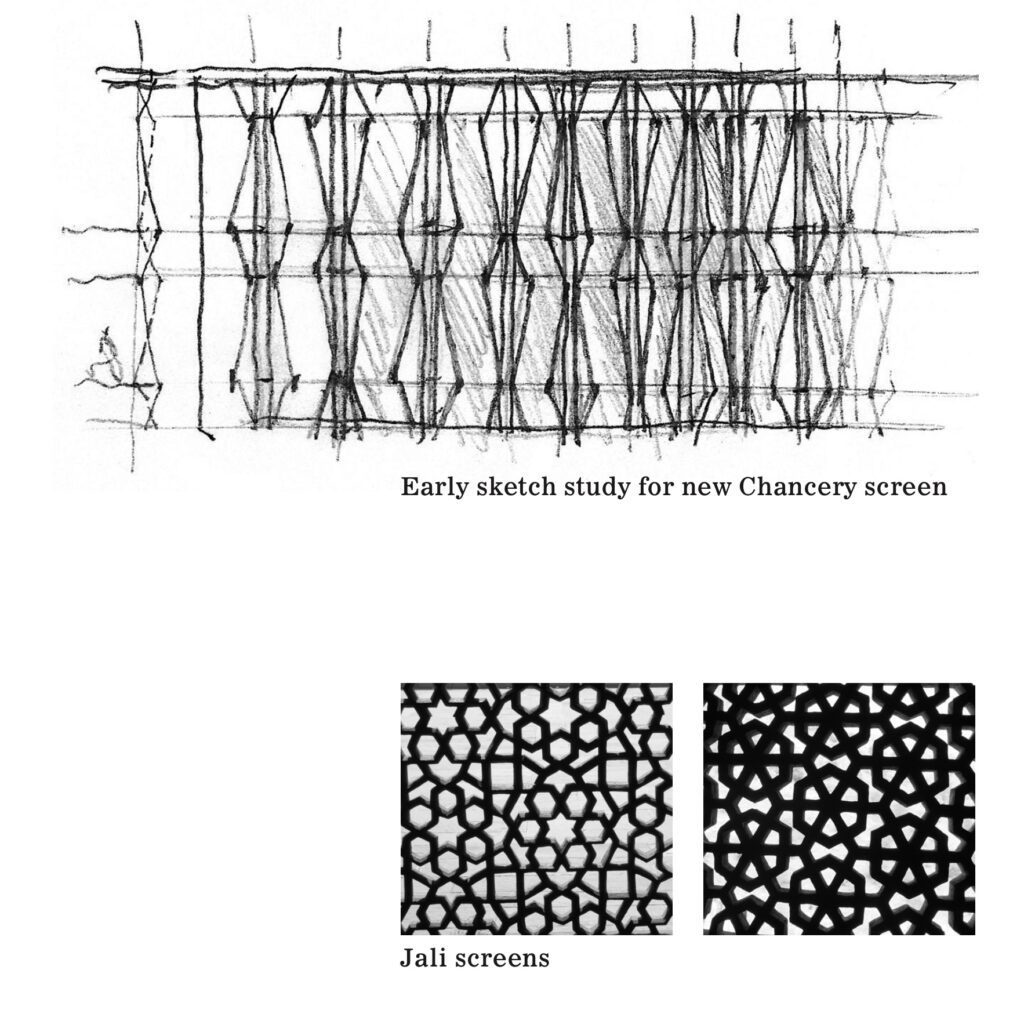
As part of the same campus, Weiss/Manfredi’s design is in dialogue with Edward Durell Stone’s. Stone also traveled to India, visiting the Taj Mahal, in the weeks before he presented his first sketch. Both the historic and new designs for the U.S. Embassy in New Delhi are tied to similar reference points, though Weiss/Manfredi and Edward Durell Stone were inspired by different aspects of the historic sites.
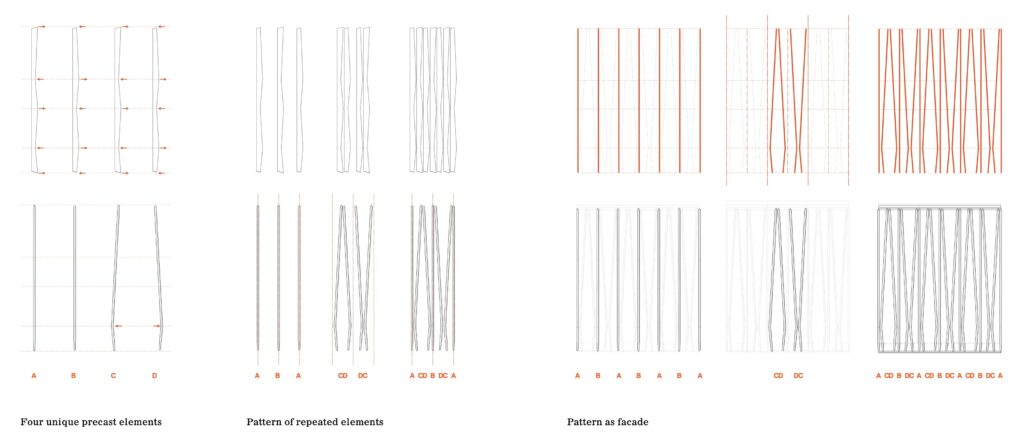
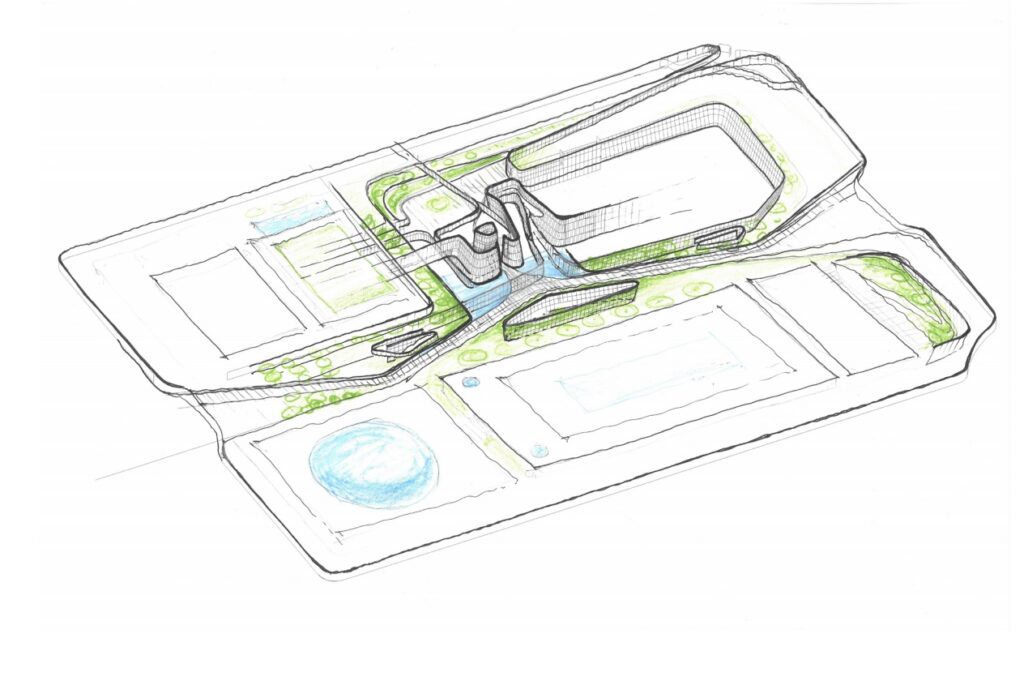
Indian architecture also offers a myriad of ways to respond to the climate, which can be very hot, dry, or wet depending on the season. Finely carved screens and canopies are common features in Mughal architecture, both diffusing the intensity of the sun and sheltering from monsoons. Water features, such as stepwells and reflecting pools, store drinking water in dry seasons and provide evaporative cooling in the heat. The environmental agendas embedded in the Mughal architecture were inspirational in the design of new embassy.
Building on the Diplomatic Legacy
Now, nearly sixty years after the original design by Edward Durell Stone, the U.S. Embassy in New Delhi is one of the largest diplomatic missions in the world. The embassy currently represents seventeen U.S. federal agencies and coordinates the activities of four consulates: Mumbai, Kolkata, Chennai, and Hyderabad. While the size of the original embassy building and its site have remained the same over the past decades, demands for space, security, and sustainability have changed. The current renovation, expansion, and alteration project grew out of the urgent need to address these challenges and recast the embassy site as a multifunctional campus.
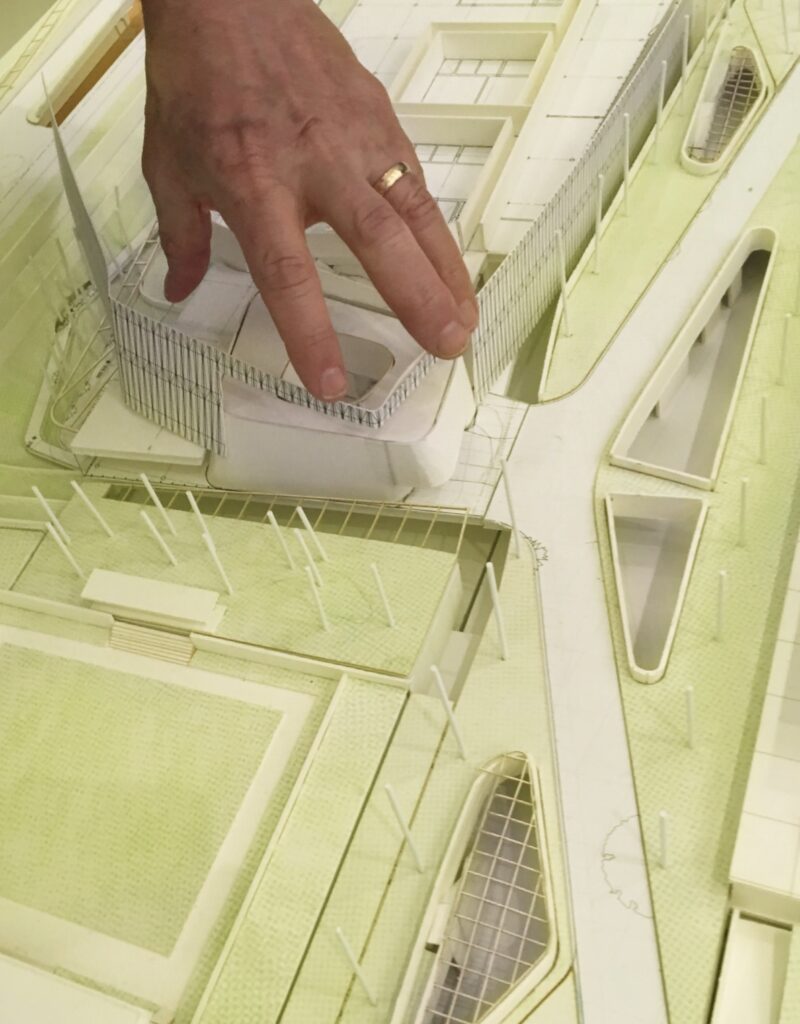
In 2015, the U.S. State Department commissioned Weiss/Manfredi to update the embassy in New Delhi to meet today’s requirements. Aging building utilities, unclear circulation routes, and outdated systems inhibit daily life and work at the embassy. Working closely with the Bureau of Overseas Buildings Operations (OBO), the arm of the State Department that manages the design and construction of diplomatic facilities, Weiss/Manfredi tested multiple designs against complex and competing requirements. With a series of cast stone screens, canopies, and garden walls, the new embassy design reflects traditions in Indian architecture, while simultaneously introducing a resilient design language that brings the campus into the twenty-first century.
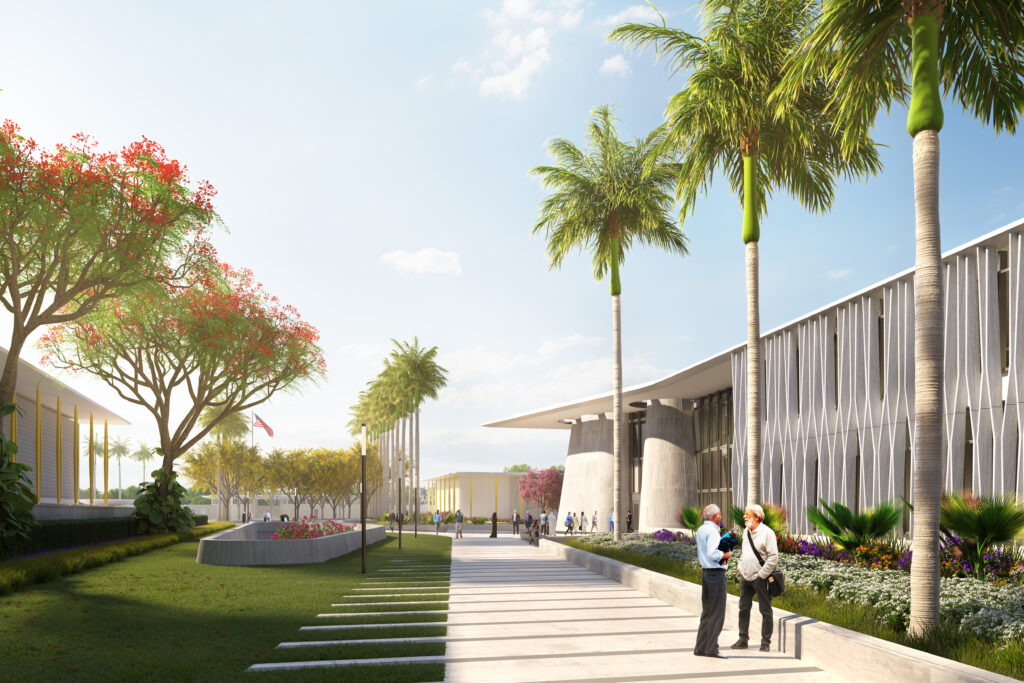
By considering the original vision of the embassy in New Delhi, historic Indian architecture, and current program needs, Weiss/Manfredi’s design brings the embassy forward while honoring its history and context. A new Chancery, Support Annex, and Staff Housing along the central corridor are connected to the historic buildings through their language of stone walls, screens, and canopies, which add to the functional, symbolic, and expressive character of the revitalized embassy campus.
The full story of the new embassy design is available in the New U.S. Embassy New Delhi Design Book.
1. None of the United States Embassy buildings in Chanakyapuri have been identified as historic landmarks under Indian law, nor is the compound part of a UNESCO World Heritage Site. Section 402 of the National Historic Preservation Act of 1966 (as amended) directs federal agencies to take into account the effects of their undertakings on historic properties recognized by UNESCO or by the countries in which they are located. The U.S. Department of State recognized the chancery’s significance by placing it on the Secretary of State’s Register of Culturally Significant Property in 2004. The register, which includes twenty-six American diplomatic properties, honors American buildings and sites abroad for their architectural and diplomatic significance.
